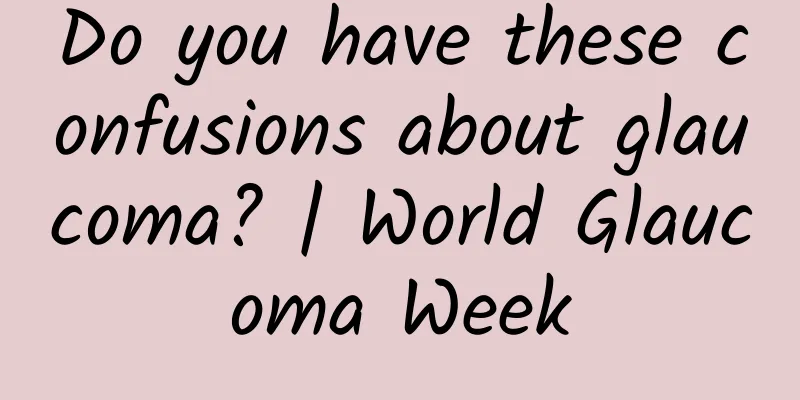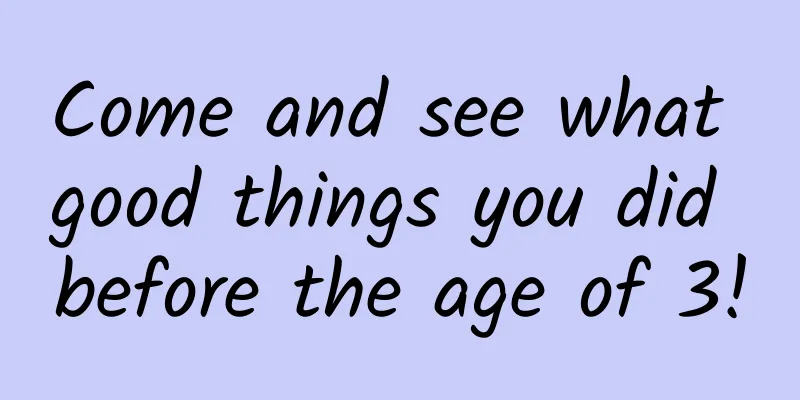Do you have these confusions about glaucoma? | World Glaucoma Week

|
March 12th to March 18th, 2023 is World Glaucoma Week. This year's theme is "Pay attention to Glaucoma: consensus protects vision, guidelines protect light." Glaucoma is one of the most common blinding eye diseases in the world. If it is not treated in time, the blindness rate is high. Early detection and early treatment of glaucoma will prevent the light from sneaking away. Compared with myopia and cataracts, glaucoma is still a little unfamiliar to everyone. Many glaucoma patients also have many doubts about this disease. In this regard, we have selected several common and common questions to answer your questions. ask What is glaucoma? Answer: Glaucoma is a disease in which excessive production of aqueous humor (nutrient fluid of the eye) or obstruction of its circulation causes excessive accumulation of aqueous humor in the eye, leading to increased pressure in the eye, that is, increased intraocular pressure, compression and damage of the optic nerve, which in turn leads to decreased vision. Intraocular pressure is the most important risk factor for glaucoma. Controlling intraocular pressure to a safe range is an important indicator of effective glaucoma treatment. ask Can glaucoma be cured? A: Once glaucoma causes damage to the optic nerve and visual function, it is generally irreversible, but through active treatment, the disease can be controlled and visual function can be maintained. Early detection, early intervention, and regular follow-up can minimize the harm of glaucoma. Glaucoma is preventable, controllable, and not scary, but ignoring it may lead to irreversible blindness. ask Is surgery necessary for glaucoma? I don't want surgery, can I just keep taking medication? A: Glaucoma can be treated with drugs, lasers, and surgery. The "Guidelines for Glaucoma in China (2020 Edition)" is the current clinical guideline for glaucoma in my country. Doctors need to follow the guidelines and make medical decisions based on the patient's specific situation and wishes. The disease management of glaucoma requires good communication between patients and doctors. For example, some patients need to undergo surgery according to their condition, but if they have concerns and want to continue taking medication, they should communicate with the attending physician in a timely manner to see if the medication can continue to control the condition. If the intraocular pressure cannot be controlled within a safe range after receiving multiple drug treatments, further surgery is needed to enhance the effect of treatment. Therefore, doctors and patients work together to reduce the harm of glaucoma and protect visual function. ask I have glaucoma, why did the doctor ask me to have laser surgery? A: There are many types of ophthalmic lasers. In most cases, the colloquial term "laser" in glaucoma clinics refers to "laser peripheral iridotomy/shaping." This is a laser treatment for narrow, closed or angle-closure glaucoma. In the human eye, due to abnormal development or excessive thickness of the iris (the brown tissue around the pupil), or due to the dilated pupil, the iris is "crowded together", which hinders the outflow of aqueous humor from the anterior chamber angle and increases the intraocular pressure. In layman's terms, the aqueous humor needs to be drained from the anterior chamber angle, but in eyes with narrow/closed anterior chamber angles or angle-closure glaucoma, the drainage of aqueous humor from the anterior chamber angle is blocked to varying degrees. In this case, a small incision is made on the iris through "laser", allowing the aqueous humor to flow through the incision to the anterior chamber angle, achieving the purpose of balancing the flow of aqueous humor and alleviating iris bulging. Another common laser treatment in the glaucoma clinic is "laser trabeculoplasty" for open-angle glaucoma. In patients with open-angle glaucoma, the trabecular meshwork filtration capacity (drainage capacity) is reduced, leading to increased intraocular pressure. At this time, laser trabeculoplasty can enhance trabecular meshwork filtration, promote aqueous humor drainage, and achieve the purpose of lowering intraocular pressure. In short, appropriate and timely laser treatment can help patients reduce the use of intraocular pressure-lowering drugs, delay or even avoid glaucoma surgery, and allow patients to gain greater benefits with less effort. ask I have glaucoma and the doctor performed cataract surgery on me. Unexpectedly, my intraocular pressure returned to normal. Why? A: The "Guidelines for Glaucoma in China (2020 Edition)" states that cataract surgery is the first choice for patients with angle-closure glaucoma and cataracts. This is because the results of multicenter clinical trials have confirmed that cataract surgery can significantly widen the chamber angle. In other words, cataract surgery widens the anterior chamber angle, the "must-pass" for aqueous humor to drain. As the aqueous humor drains more, intraocular pressure drops. However, it cannot be said that normal intraocular pressure after cataract surgery is "once and for all". Glaucoma patients still need long-term and regular follow-up. When intraocular pressure is not well controlled, eye drops that lower intraocular pressure are needed. If drug treatment is not effective, other anti-glaucoma surgical treatments are still needed. ask My intraocular pressure has returned to normal after taking the medication. Can I stop taking the medication? Answer: First, the normal value of intraocular pressure is not equal to the safe intraocular pressure or target intraocular pressure. The target intraocular pressure is set by the doctor based on the specific type of glaucoma and condition of each patient, and it is adjusted according to changes in the condition during follow-up. In short, the target intraocular pressure is personalized, and it is not "all right" if it drops below 21 mmHg. Second, it is not advisable to stop taking the medicine just because you think it is “safe”. It is a good thing if the intraocular pressure can be controlled at the target intraocular pressure after taking the medicine. However, this is the credit of the intraocular pressure-lowering medicine. After stopping the medicine, the intraocular pressure will rise again, and the "ups and downs" of intraocular pressure plus high intraocular pressure will aggravate the nerve damage of glaucoma. In many cases, visual function deteriorates significantly after patients stop taking the medicine again and again because they think it is "safe". Therefore, the treatment and follow-up of glaucoma must be persisted. When there are confusions or problems, such as pregnant women not knowing how to use medications, not being able to buy medications when on business trips, red eyes, itching and discomfort after taking medications, etc., you must communicate with your doctor in time to obtain solutions. Author: Yang Yangfan and Li Yiqing, Department of Glaucoma, Zhongshan Eye Center, Sun Yat-sen University Reviewer: Liu Yi, an expert in the National Health Science Expert Database, chief physician and professor of Zhongshan Eye Center, Sun Yat-sen University Planning: Tan Jia Editor: Liu Yang |
<<: Prevention and treatment of hay fever
Recommend
What does it mean when there is sticky liquid down there in late pregnancy?
The presence of sticky liquid below in the late p...
Will women feel pain when having a medical abortion?
Many women get pregnant unexpectedly without any ...
Can uterine coldness cause miscarriage? How to treat it?
Many pregnant women may not know the specific sit...
What happened if water flows out from below after transplantation?
We often hear about transplant surgery. Clinicall...
The difference between early pregnancy, miscarriage and menstruation
Medically, miscarriage before 12 weeks of pregnan...
Teach you step by step how to maintain and service a home non-invasive ventilator. Do you get it?
Home non-invasive positive pressure ventilation t...
Can you feed shrimp to red-eared sliders? What do red-eared sliders eat to grow well and fast?
As people's living standards improve, more an...
Lower abdominal pain and anal swelling during intercourse
If you experience lower abdominal pain and anal s...
Why do I advise you to lose weight in winter? Because the effect is so good
As soon as winter comes, men, women, old and youn...
There is a small nipple next to the nipple
Breast is actually a very important organ for fem...
How many days does it take for fungal infection to show symptoms?
Everyone has heard of fungal diseases. Fungal dis...
Troubles of patients after surgery for lung carcinoma in situ
This is the 3907th article of Da Yi Xiao Hu Lung ...
Thick yellowish vaginal discharge
If the leucorrhea is very yellow and thick, it is...
What is normal female leucorrhea like?
Every physiological manifestation of women can re...
Why do I feel sore legs during confinement?
After ten months of pregnancy, it is believed tha...









